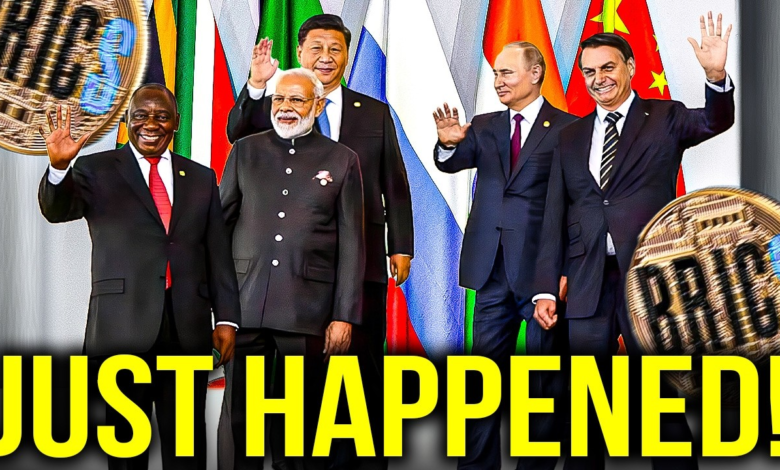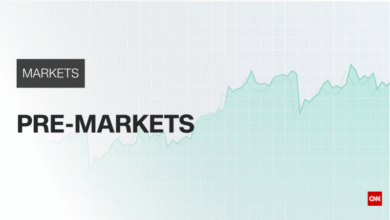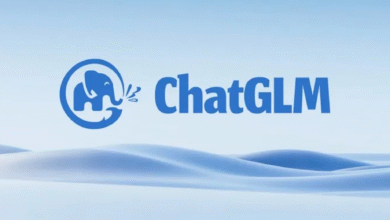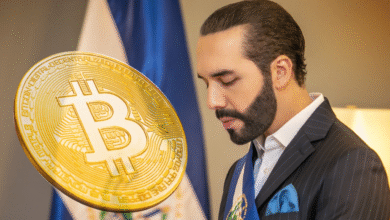BRICS Gold-Backed Stablecoin Challenges US Dollar Dominance

The BRICS gold-backed stablecoin is emerging as a pivotal development in the global financial landscape, aiming to challenge the dominance of the U.S. dollar. Led by economic giants such as China, Russia, and India, BRICS is set to harness the stability and inflation resistance of gold to combat the hegemonic grip of dollar-backed stablecoins. As inflation affects economies worldwide, this digital gold currency offers an attractive alternative that promises to safeguard value while facilitating international trade. The move towards a BRICS currency could reshape monetary sovereignty, providing nations with an opportunity to regain independence from U.S. dollar influence. By establishing a gold-backed stablecoin, BRICS not only advocates for a more balanced financial ecosystem but also signals its commitment to fostering economic resilience among its member nations.
The introduction of a BRICS-backed digital currency signals a transformative shift in global finance, where emerging economies strive to dethrone the traditional currency hierarchy dominated by the U.S. dollar. This new monetary solution, anchored by precious metals like gold, presents an innovative, inflation-resistant alternative that resonates with nations seeking economic sovereignty. By leveraging the advantages of a gold-backed asset, economies involved in the BRICS coalition aim to facilitate cross-border transactions and bolster their collective bargaining power. The push for a stablecoin rooted in tangible resources not only reflects an evolving ideology but also highlights the increasing relevance of non-dollar-based currencies in the international market. As this initiative takes shape, it could pave the way for a widespread adoption of alternative digital currencies that prioritize stability and resilience.
The Emergence of a BRICS Gold-Backed Stablecoin
As the global financial landscape evolves, the idea of a BRICS gold-backed stablecoin is gaining significant traction. Led by influential nations such as China, Russia, and India, this innovative currency aims to establish a robust alternative to the U.S. dollar. Max Keiser’s insights highlight the potential of this gold-backed stablecoin to offer a viable solution for countries seeking to mitigate the risks associated with reliance on the dollar. This proposed currency, fundamentally tied to gold, could emerge as an inflation-resistant currency, catering to nations wary of the U.S.’s financial dominance.
The adoption of a gold-backed stablecoin by BRICS could transform international trade dynamics. By backing their currency with gold, these nations not only counteract the volatility of fiat currencies but also reinforce their economic sovereignty. With increasing calls for alternatives to U.S. dollar transactions, especially amidst rising inflation, a BRICS gold-backed stablecoin could become a preferred choice for countries looking for stability and security in their economic practices. This scenario poses a challenge to the existing dollar-centric system, ushering in a new era of digital currencies.
Challenging U.S. Dollar Dominance with BRICS Initiatives
The dominance of the U.S. dollar in international markets has long been a point of contention among emerging economies. Max Keiser’s assertion that BRICS will leverage a gold-backed stablecoin is a direct response to the overreach of the dollar. This strategy is particularly relevant as countries like India, Russia, and China explore alternative frameworks for trade. By developing a BRICS currency that aligns with their geopolitical interests, these nations aim to diminish the influence of the U.S. and promote a more balanced global economy.
Furthermore, the anticipated rise of a BRICS gold-backed stablecoin signifies a crucial shift toward digital gold. This currency not only offers a hedge against inflation but also embodies the principles of financial independence and resilience. As BRICS nations rally together to create this stablecoin, they reinforce their resolve to challenge the current dollar hegemony, fostering greater economic collaboration and stability within their bloc. This initiative could inspire other regions to pursue similar paths, further undermining the U.S. dollar’s longstanding global authority.
Inflation Resistance: The Case for a BRICS Gold-Backed Currency
One of the most compelling arguments for a BRICS gold-backed stablecoin is its potential as an inflation-resistant currency. In an era where inflation threatens to erode purchasing power, a currency anchored to gold could provide a safeguard for nations looking to protect their economies. As Max Keiser highlighted, the appreciation of gold during inflationary periods positions this stablecoin as a smart alternative for BRICS countries seeking stability amidst rising costs and economic uncertainty.
Gold has historically served as a store of value, making it a natural choice for those who prioritize economic security. The introduction of a BRICS gold-backed stablecoin could resonate deeply with consumers and investors alike, who are increasingly wary of unbacked fiat currencies. By aligning with the intrinsic value of gold, BRICS aims to foster confidence among its member nations, encouraging trust in a new financial system that prioritizes stability and resilience over the perceived volatility of the dollar.
Digital Gold: The Future of Currency in the BRICS Bloc
In the digital age, the concept of currency is rapidly evolving, and the notion of digital gold is becoming increasingly relevant. A BRICS gold-backed stablecoin embodies this innovation, bridging the gap between traditional asset-backed currencies and modern digital transactions. This approach not only reinforces the value of gold but also aligns with emerging technologies, creating a robust framework for future financial systems within the BRICS nations.
The use of digital gold facilitates seamless transactions across borders while ensuring the stability and value retention associated with traditional gold. As nations within the BRICS bloc look to enhance their economic collaboration, understanding the transformative potential of digital currencies is vital. By pushing for a gold-backed digital currency, these nations not only promote financial inclusivity and resilience but also position themselves as leaders in a rapidly changing global economic landscape.
Potential Implications of a BRICS Gold-Backed Stablecoin
The implementation of a BRICS gold-backed stablecoin could have far-reaching implications on both a regional and global scale. If successful, such a stablecoin may disrupt the existing financial order dominated by the U.S. dollar, prompting a shift in trade practices and currency adoption. This alternative could herald a new age where countries prioritize collective economic security over dependence on the dollar, signaling a psychologically powerful move away from U.S. hegemony.
Moreover, a gold-backed stablecoin would send a strong message to global markets regarding the ability of emerging economies to rally together for mutual benefit. The potential for increased trade among BRICS nations, devoid of U.S. dollar interference, could bolster their economic position on the world stage. This could inspire similar initiatives among other nations, further challenging the long-standing dominance of the dollar and catalyzing a more dynamic multipolar financial system.
Challenges Facing the Adoption of a BRICS Gold-Backed Currency
Despite the promising outlook for a BRICS gold-backed stablecoin, challenges remain. Historical tensions among BRICS member nations could hinder cohesive collaboration, making the establishment of a unified currency complex. Additionally, the need for a robust infrastructure to support digital transactions and convert existing economic frameworks to accommodate a gold-backed stablecoin poses further hurdles. Ensuring widespread acceptance among diverse economies will be crucial for its success.
Furthermore, external pressures from established financial powers, particularly the U.S., cannot be overlooked. Potential retaliation in the form of tariffs or economic sanctions could complicate the introduction of a new state-backed currency. The BRICS nations must navigate these geopolitical realities carefully to create a resilient framework that withstands external challenges while promoting financial independence and stability within the bloc.
The Role of Gold in the Future Financial System
Gold has historically been viewed as a safe haven asset, especially during times of economic turbulence. The rise of a gold-backed stablecoin within the BRICS initiative underscores the precious metal’s relevance in modern finance. As central banks across the globe look for ways to hedge against inflation and currency devaluation, the integration of gold into a digital currency framework could reinforce market confidence and support long-term financial stability.
Incorporating gold into the BRICS financial system could also pave the way for increased investment in precious metals, potentially leading to higher valuations and stability in global markets. As nations reassess their currency strategies, gold’s intrinsic value will likely remain a focal point. By promoting a gold-backed stablecoin, BRICS not only champions the advantages of gold but also positions itself as a pioneer in reimagining a financially secure future.
Strategic Benefits of a Unified BRICS Currency
The strategic advantages of uniting under a BRICS gold-backed stablecoin extend beyond mere financial transactions. This collective initiative could enhance political alliances and economic cooperation among member states, fostering a deeper sense of unity in navigating global challenges. By embracing a shared currency that transcends the constraints of the U.S. dollar, BRICS nations can present a unified front on economic issues, enriching diplomatic relations.
Moreover, a unified BRICS currency may lead to more favorable trade agreements, as member nations could bypass reliance on the dollar for intra-bloc trading. This shift might stimulate economic growth and improve trade efficiency among these countries. As they continue to collaborate on this innovative financial pathway, the BRICS bloc stands to redefine its place in global economics, reinforcing its role as a significant player in the ever-evolving landscape of international finance.
The Future of Digital Currencies and BRICS
The future of digital currencies appears promising, especially with initiatives like the BRICS gold-backed stablecoin paving the way for new economic paradigms. As countries increasingly digitize their financial infrastructures, the idea of a stablecoin backed by a tangible asset like gold could gain broader acceptance. This shift not only represents an adaptation to technological advancements but also a desire for stability in an increasingly unpredictable financial environment.
Furthermore, the rise of digital currencies backed by gold represents a significant evolution in monetary policy for BRICS nations. As new economic challenges arise, the need for innovative financial solutions becomes evident. The encompassing nature of a BRICS gold-backed currency could prove advantageous in navigating fluctuating markets and fostering resilience against external economic pressures. Overall, this initiative reflects a significant commitment toward a collaborative and secure financial future.
Frequently Asked Questions
What is the BRICS gold-backed stablecoin and how does it challenge US dollar dominance?
The BRICS gold-backed stablecoin is an initiative proposed by BRICS nations—Brazil, Russia, India, China, and South Africa—aiming to create a digital currency that is backed by gold. This currency is intended to provide an alternative to the US dollar, which currently dominates international trade. By being backed by gold, this stablecoin is seen as an inflation-resistant currency, offering stability and a hedge against the devaluation of fiat currencies.
How does a gold-backed stablecoin protect against inflation?
A gold-backed stablecoin is designed to maintain its value by tying its worth to a physical asset—gold. This intrinsic value helps it remain stable and less susceptible to inflation compared to fiat currencies, especially in times of economic uncertainty. By utilizing this model, the BRICS gold-backed stablecoin aims to provide a secure alternative to the US dollar, thereby appealing to nations looking to protect their economies from inflation.
What advantages does the BRICS gold-backed currency offer over the US dollar?
The BRICS gold-backed currency offers several advantages, including stability due to its connection to gold, resistance to inflation, and independence from US monetary policy. It empowers nations to conduct trade without relying on the US dollar, potentially reducing the dominance of the dollar in global markets. This shift could enhance financial sovereignty for participating countries, making the BRICS gold-backed stablecoin a compelling alternative.
How might BRICS nations implement a gold-backed stablecoin for international trade?
BRICS nations could implement a gold-backed stablecoin by creating a digital currency that is convertible to gold at a predetermined rate. This would allow countries to settle international trade transactions in a stable and reliable manner, minimizing the risks associated with currency fluctuations and US dollar’s hegemony. Notably, countries like India, which have historical ties to gold, may find adopting this currency more practical for trade.
What role does gold play in competing against a dollar-backed stablecoin?
Gold plays a critical role in offering a secure and trusted foundation for the BRICS gold-backed stablecoin, positioning it as a viable alternative to dollar-backed stablecoins. Since gold has intrinsic value and a long-standing history as a reliable store of wealth, it can attract nations looking to avoid the volatility associated with fiat currencies. This positions the BRICS gold-backed stablecoin strategically against any potentially hegemonic dollar-backed stablecoin.
Can a BRICS gold-backed currency thrive amid global economic challenges?
Yes, a BRICS gold-backed currency can thrive amid global economic challenges, particularly due to its inflation-resistant nature. In times of financial instability, countries may prefer a currency backed by tangible assets like gold, as it is less vulnerable than fiat currencies influenced by central bank policies. As global economic dynamics evolve, this currency may gain traction among nations seeking to lessen their dependence on the US dollar.
What potential challenges could the BRICS gold-backed stablecoin face?
The BRICS gold-backed stablecoin could face challenges such as regulatory hurdles, the need for cooperation among member nations, and acceptance in international markets. Additionally, external pressures from the US and potential tariffs against BRICS nations could complicate its implementation. Overcoming these obstacles will be crucial for the stability and success of the gold-backed currency in competing with the US dollar.
| Key Points |
|---|
| Max Keiser advocates for a BRICS gold-backed stablecoin to rival U.S. dollar stablecoin dominance. |
| The gold-backed stablecoin would provide resistance against inflation and enhance international trading independence. |
| Russia, China, and India are key players in promoting this gold-backed alternative. |
| The concept of a BRICS gold-backed currency gained traction in 2023 alongside discussions about a unified BRICS token. |
| India’s existing preference for a gold standard and Sharia law’s favorability toward gold could bolster adoption. |
| Threats from the U.S., including potential tariffs, loom over the implementation of this currency. |
Summary
BRICS gold-backed stablecoin is poised to reshape the international currency landscape as BRICS nations, particularly China, Russia, and India, push forward with this initiative. By creating a stablecoin backed by gold, these nations aim not only to challenge the U.S. dollar’s dominance but also to provide a hedge against inflation and economic instability. The potential benefits of a gold-backed stablecoin include enhanced trading independence and stability for nations that adopt it. Although opposition from the U.S. poses a significant challenge, the momentum behind this movement reflects a growing desire among emerging economies to establish a safer and more equitable financial system.




